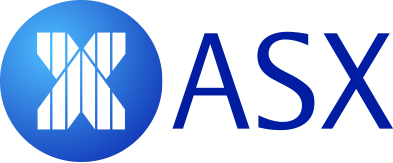
Uncleared margin and central clearing access
The introduction of uncleared-margin rules for OTC derivatives in Australia is leading market participants to consider central-clearing solutions. As the regulations capture a growing number of users, ASX says the need to move away from bilateral trading and manage compliance obligations is growing.
The introduction of uncleared-margin rules for OTC derivatives in Australia is leading market participants to consider central-clearing solutions. As the regulations capture a growing number of users, ASX says the need to move away from bilateral trading and manage compliance obligations is growing.
Soon after the financial crisis, G20 leaders committed to increase the resilience and transparency of the OTC derivatives markets, declaring all standardised contracts should be cleared through central counterparties (CCPs).
Regulators globally have supported this goal through various means, including mandating central clearing for certain firm types and sizes, capital charges for uncleared counterparty credit risk, capital and liquidity frameworks for banks, and uncleared margin rules (UMR) for OTC derivatives.
This has led to higher OTC derivatives costs for trades that remain bilateral. In response, banks have limited the services offered to clients, client coverage and appetite for certain assets.
“Globally, the market has supported this goal, evidenced through the ever-growing market share of OTC derivatives being traded on a cleared versus a noncleared basis,” notes Fiona Tramontana, general manager, rates at ASX in Sydney. “Multiple clearinghouses that focus on different service areas and product-specific offerings provide firms with options that best fit their clearing needs.”
According to data from the DTCC Australian Trade Repository, 58 per cent of all products are now centrally cleared. This includes just less than 50 per cent of credit trades and about 70 per cent of rates contracts.
The rollout of uncleared-margin rules has increased the cost of noncleared OTC derivatives and pushed users into costly compliance programmes. The rules require users bilaterally to agree and exchange initial margin (IM) with counterparties, triggered through a A$75 million (US$53.9 million) threshold per counterparty.
In Australia, these rules have been implemented in stages based on a firm’s average aggregate notional amount (AANA) exceeding qualifying levels. The Australian Prudential Regulation Authority (APRA) began instituting the rules in 2016. Phase five – which captures AANA of A$75 billion – started in September 2021. The final phase, which will capture notional trades of A$12 billion or smaller, is scheduled to begin the same time next year.
Tramontana says the last two phases will affect a larger number of firms. “This magnifies the impact to all related parties, from trading counterparties to custodians and asset managers trading for asset owners,” she explains. “To ensure timeframes are adhered to, focus must also be placed on activities such as regulatory approval of risk models and collateral management among other required support services.”
Joris Hillmann, Melbourne-based head of capital markets at AustralianSuper, says the rules have added complexity and cost for monitoring and maintaining IM exposures across multiple counterparties. “Due to long onboarding lead times, counterparties may be more selective on who they will put these full arrangements in place with,” he says.
Users can deploy several strategies to mitigate the impact of uncleared-margin rules, such as reducing AANA by compressing existing noncleared OTC derivatives exposures or backloading existing contracts with counterparties to become cleared.
“Additionally, they could remain under counterparty IM exchange-threshold levels, set IM limits with counterparties to remain under the IM threshold, or use exchange-traded futures as a replacement for OTC derivatives where suitable,” Tramontana comments.
CRYSTAL CLEARING
Counterparty access and market liquidity go hand in hand when trading OTC derivatives. With trading shifting from a noncleared to cleared basis, access to central clearing will play an important role in ensuring firms can improve or even retain desired levels of access to counterparties and liquidity. With regulatory reform increasing costs for trading on a bilateral basis, the benefits of centrally clearing OTC derivatives are becoming widely accepted.
Hillman notes the ability to move quickly and document with counterparties in line with uncleared-margin rules is limited during times of market stress. This affects access to liquidity. “Being able to trade on a cleared basis improves our access to overall market liquidity in normal and stressed market conditions,” he explains.
The ability to access liquidity and competitive pricing is tested most during stressed market conditions when risk appetite and access to a counterparty’s balance sheet retract. The very nature of trading OTC derivatives, unlike exchange-traded products, means a firm’s access to liquidity is based on bilateral counterparty relationships.
For buy-side firms, bilateral access represents a smaller component of overall market liquidity across some vanilla OTC derivatives. Unlike the US, UK, and European markets, central clearing remains voluntary for the buy side in Australia. Drivers for adopting central clearing are specific to each firm, but they can be broadly categorised as being associated with market access, credit appetite, and legal and operational requirements.
Michael Reddick, head of derivatives trading and analytics at New South Wales Treasury Corporation in Sydney, says: “The most important issue to consider when looking at why we should access central clearing of OTC derivatives is ensuring we can retain suitable access to market liquidity and competitive pricing. As OTC derivative liquidity bifurcates between cleared and noncleared markets, we are mindful that, without having access to both liquidity pools, our trading risk increases. We view this risk as imminent, given the upcoming UMR implementation for phase five and six firms affecting a wider group of market participants.”
Buy-side firms access central clearing through brokers. This can have a range of benefits. Appointment of a clearing broker will determine access to various CCPs, cleared product types, client-protection models and account structures – and determine the risks, should a clearing broker default.
Ross Gulliford, head of investment operations at Challenger in Sydney, says using multiple brokers is important for risk mitigation and commercial flexibility. He adds: “Should an issue occur with a single clearing broker, we maintain resilient access to market liquidity and put ourselves in the best possible position to achieve portability of our positions and collateral if required. Both are extremely important in volatile markets.”
Gulliford continues: “Commercially, we take advantage of the flexibility achieved through greater product coverage, wider CCP access and the competitive service offerings we obtain through our multiple clearing relationships.”
An obvious objective of central clearing is to maximise net margin benefits to reduce the funding costs associated with meeting margins. However, using multiple clearing brokers can make it difficult to determine how best to maximise this.
Tramontana says understanding a firm’s cleared product universe, trading strategy and optimal account structures will highlight where netting benefits are most significant. “For example, the maximum netting benefit may be achieved through a CCP providing access to multicurrency netting benefits within a single product type, or a CCP providing cross-product margining, or some combination of both,” she explains. “Clearing brokers also differentiate their offering through the provision of a range of margin-netting and collateral services directly to customers if the CCP does not offer a particular service for certain clients.”
ASX OTC Clearing
ASX operates one of the world’s top-four interest-rate futures exchanges according to the WFE Derivatives Report 2019, with customers from across the globe accessing its deep, liquid markets in Australian and New Zealand dollar rates products alongside a suite of equity, grain and energy derivatives.
“Our interest-rate futures market forms the foundation for the complementary OTC interest-rate swap market, while our Australian dollar equities and exchange-traded options underpin the OTC equity options clearing service,” says Allan McGregor, senior manager, rates (OTC), strategy and ecosystem development at ASX.
The exchange delivers OTC clearing as a fully integrated offering, providing significant margin, capital, trade and operational efficiency for customers.
Services include 24-hour clearing for Australian and New Zealand dollar interest-rate swaps, enabling global trading and access to clear risk across time zones and key periods of market activity. ASX’s integrated service offering also supports cross-product margining between futures and OTC swaps, and exchange-traded and OTC equity options – delivering significant margin reduction to diversified portfolios.
“Our local market expertise, strong domestic relationships and global connectivity allow us to deliver highly efficient, robust services and take action where required,” McGregor adds.
In the financial year ending 30 June 2021, the ASX cleared more than A$50 trillion (US$35 trillion) notional value in Australian dollar interest-rate derivatives and more than A$2.4 trillion in equity derivatives across its exchanged-traded futures, options and OTC products.

HIGH-GRADE ISSUERS YEARBOOK 2023
The ultimate guide to Australian and New Zealand government-sector borrowers.














